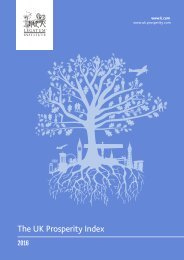Rolleston-on-Dove NP - Submission Version
Rolleston-on-Dove NP - Submission Version
Rolleston-on-Dove NP - Submission Version
Create successful ePaper yourself
Turn your PDF publications into a flip-book with our unique Google optimized e-Paper software.
<str<strong>on</strong>g>Rollest<strong>on</strong></str<strong>on</strong>g> <strong>on</strong> <strong>Dove</strong> Neighbourhood Plan<br />
2.8 <str<strong>on</strong>g>Rollest<strong>on</strong></str<strong>on</strong>g> estate was held by the family of that name from the 12th Century until it was sold to<br />
Sir Edward Mosley in 1620. The estate c<strong>on</strong>tinued to be held by the Mosley’s until they left in the<br />
early 20th Century. Extensive purchases, especially in the 19th century resulted in an estate<br />
described in the Estate Sale Catalogue of 1919 as a ‘Manorial, Residential, Agricultural and<br />
Sporting Estate extending to nearly 3,825 acres’ and ‘Embracing practically the whole of the<br />
parish of <str<strong>on</strong>g>Rollest<strong>on</strong></str<strong>on</strong>g> and c<strong>on</strong>siderable porti<strong>on</strong>s of the parishes of Anslow and Tutbury’.<br />
2.9 The Mosley’s held the village as a ‘feudal’ agricultural estate with little development of industry<br />
apart from traditi<strong>on</strong>al crafts such as a smithy, basket making or brick making for estate<br />
properties. After the Estate sales, large areas of land to the south of the village were purchased<br />
by Staffordshire County Council to create starter farms for soldiers returning from World War<br />
One. These retained the primarily agricultural nature of the area.<br />
2.10 The village maintained little more than a butchery, bakery and general store for basic needs.<br />
The main purpose of the railway stati<strong>on</strong> was for movement of agricultural raw materials and<br />
products, supported by limited commuter travel. Greater c<strong>on</strong>sumer needs were provided from<br />
either Burt<strong>on</strong> or Tutbury.<br />
2.11 With improvements in public and mainly, private transport there have been increasing pressures<br />
<strong>on</strong> <str<strong>on</strong>g>Rollest<strong>on</strong></str<strong>on</strong>g> as a residential, commuter base for the surrounding area. In additi<strong>on</strong> to its rural<br />
and country estate aspect it has enjoyed a str<strong>on</strong>g reputati<strong>on</strong> for community spirit.<br />
2.12 Figures in the County History give a populati<strong>on</strong> of around 850 in the period 1901 – 1931. This<br />
grew to 1,330 in 1951, 2,162 in 1961, 3,636 in 1971, 3,574 in 1981, 3,119 in 1991, 3,134 in<br />
2001 and 3,267 in 2011. These figures parallel the development of housing estates (see ‘Growth<br />
of the village’). There has been ribb<strong>on</strong> infilling of the land between the old centre and the former<br />
stati<strong>on</strong> to the south of the flood plain and movement south and west towards Strett<strong>on</strong> and<br />
Burt<strong>on</strong>. In 1945 there were around 18 farms in the village, 14 of them producing milk. By 2000<br />
this had been reduced to five with two milk producers. Most farmhouses and outbuildings<br />
together with land close to the village had been c<strong>on</strong>verted to housing.<br />
2.13 At no time has the necessary infrastructure been provided to support this expansi<strong>on</strong>. The<br />
provisi<strong>on</strong> of a High School (1963-1985) was short-lived and recent attempts to provide a medical<br />
centre failed. With past developments the modern village has coalesced into a large housing<br />
complex highly reliant <strong>on</strong> external services and resources for its maintenance.<br />
6



